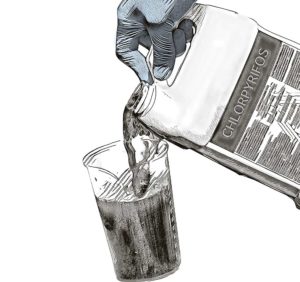This week, the U.S. Environmental Protection Agency announced plans to ban the use of the insecticide chlorpyrifos on food crops, following an April court order that the EPA either halt use of the product or demonstrate its safety.
The broad spectrum insecticide, marketed to growers as Lorsban, has been under scrutiny for years. In 2017, the EPA denied a petition from activist groups to cancel the product before its next registration review, which was due in 2022. Those groups then sued the agency, joined by seven states including California, New York and Washington.
The EPA’s announcement raises two main concerns for the tree fruit industry, according to the Northwest Horticultural Council: the loss of a valuable chemical and the precedent that public opinion and politics circumvented the EPA’s review process.
“We don’t want judges evaluating pesticides,” said Kate Tynan, the council’s senior vice president. “We have a lot of confidence in EPA’s scientifically sound and transparent review process, but because of litigation, that process was short-circuited.”
Advocacy groups heralded the decision as a move to protect the health of farmworkers and children. In 2012, a Columbia University study linked chlorpyrifos exposure from household use of the product in the 1990s to neurological damage in children, but that application is long banned and different from the exposure risk presented by agricultural uses.
The Biden administration has cast the move revoking all tolerances for chlorpyrifos on food as “an overdue step to protect public health,” according to EPA Administrator Michael S. Regan, that will bring the U.S. in line with the European Union, Canada, and measures in several states that have already banned its use.
“Ending the use of chlorpyrifos on food will help to ensure children, farmworkers and all people are protected from the potentially dangerous consequences of this pesticide,” Regan said in a statement. “After the delays and denials of the prior administration, EPA will follow the science and put health and safety first.”
Questions remain about the full impact the EPA’s announcement will have on the tree fruit industry, Tynan said.
The rule, issued without the typical public comment period, bans use of chlorpyrifos on food crops, but it would continue to be permitted for turf grass and lumber treatment. Currently, apple growers are only allowed to apply chlorpyrifos before bloom, said David Epstein, vice president for scientific affairs for the Northwest Horticultural Council. And in the Eastern U.S., it’s an important dormant-season trunk spray to control wood boring pests. He asked the EPA if that constitutes an application for food crops — since no apples and few workers are present in the orchard during that application timing — and is awaiting clarification.
“The way tree fruit farmers apply this product, there were no exposure concerns,” he said.
There are alternative chemistries, but instead of controlling multiple pests with one spray, growers who currently rely on chlorpyrifos will have to apply several products, raising costs, Epstein said. In addition, broad spectrum insecticides such as chlorpyrifos have been an important safeguard against emerging pests.
“These older chemistries, they are very effective. When you have an emergency, an emerging vector or an invasive pest, we’ve been able to turn to these tools until we can figure out the biology,” and transition to more targeted management, Epstein said. “Yes, there are alternatives, but alternatives are not equal.”







Leave A Comment